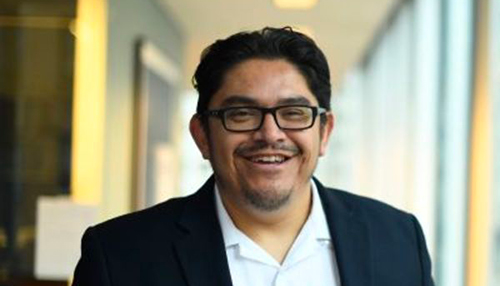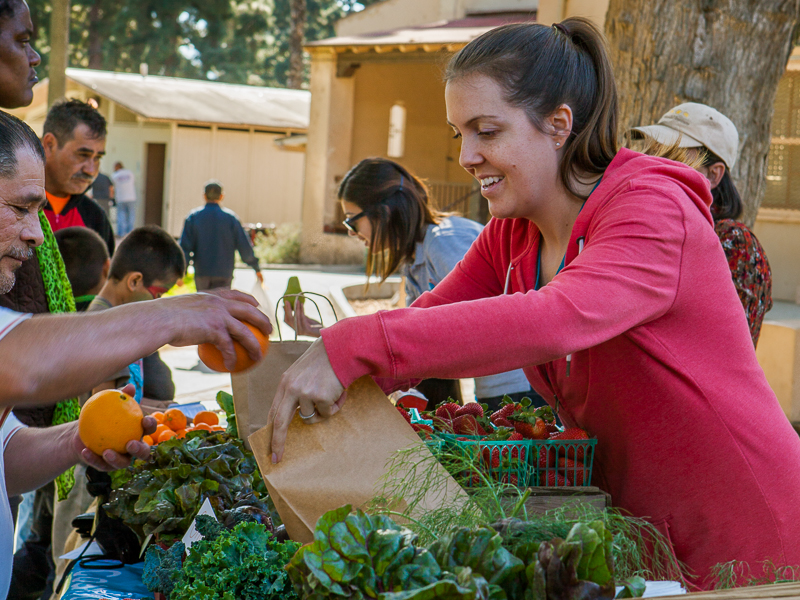This year, more than 800,000 people registered to vote in November’s upcoming midterm elections—a striking comparison to the 154,500 who registered for those in 2014. Folks are becoming civically engaged more than ever before and Community Partners is proud to support a growing number of projects working to encourage that impulse all year-round. With the elections just days away, it seemed like a good time to highlight four of those projects specifically focused on voter engagement and the barriers faced by different populations.
The Civics Center
Deeply disturbed by what she saw as an attack on democratic institutions during the 2016 elections, Laura Brill, an attorney and former clerk for Supreme Court Justice Ginsberg, knew she wanted to take action, she just wasn’t quite sure how. Then she came across a 2014 law that allows high school students to pre-register to vote. “I almost fell out of my chair,” she said, recognizing the value it held in encouraging more young people to register and vote. She also realized very few people actually knew about the law.
And so The Civics Center was born; its mission to help high schools comply with the little-known pre-registration law. They connect with high school teachers and administrators, providing them with resources to conduct their own voter pre-registration drives, along with non-partisan educational research to help increase interest in voting. They’ve also created an online voter pre-registration ‘button’ that links each high school’s website to a voter pre-registration resource. So far, according to Brill, The Civics Center has made thousands of connections at high schools in the west, as far north as Washington and Texas in the east. “While we don’t currently have the means to track how many voters we’ve helped get registered, I’ve heard back from each of these schools that they’ve registered hundreds of students and that is a huge victory,” she said.
California Native Voter Project
Also founded after the 2016 election, California Native Vote Project was created in response to what project leader Chrissie Castro saw as the lack of a cohesive native voter engagement entity in California, similar to those established in New Mexico and Montana. California itself contains the highest representation of native peoples in the country and the barriers they face to voting are legion. “There is a justified historical mistrust that our communities have with the government. We hear, ‘I don’t want to participate in a system that was never for us,’ and we understand that,” Castro explained. “We go into our communities and share a new perspective that if we don’t engage, then that leaves others to make decisions that impact our families and our communities.”
The California Native Vote Project helps native people understand where and how they need to register to vote, educates them on the issues on the ballot and how they will affect their communities. Other barriers that the group is working to address is the lack of a box to check identifying voters as Native American and voter suppression and intimidation in California’s rural northern counties. In those counties, registered native voters have faced verbal harassment at polling places and problems with non-traditional housing like trailer parks and motorhomes that don’t have required addresses. The California Native Vote Project now has a membership of 4,000 Native American community members engaged in their efforts and has registered 1,400 additional Native American voters so far. One of the more meaningful experiences for Castro has come when registering Native American elders in their 80s to vote. “When I asked them why they had never voted before they told me, ‘I didn’t know that this was something that our people did.’ We’ve received overwhelming feedback from the community that they love what we’re doing and they want more.”
Future of California Elections
The Future of California Elections, a project of Community Partners since 2012, brings together a cohesive network of election officials, civil rights organizations and election reform advocates to address the barriers that prevent robust voter engagement. Their first collective win was helping to establish a more equitable online registration process by advocating for the expansion of languages used beyond English and Spanish. Today online voter registration is available in ten languages, and serves as the model for online voter accessibility for the country.
One aspect of FOCE’s programming that project leader Astrid Ochoa is most proud of is their annual conference. “It is so important for election officials to meet face-to-face with advocates for communities of color and for folks with disabilities because not only do they learn what their communities are concerned about, but they learn how they can reach their communities, which is a huge factor in making elections more accessible.” FOCE is continuously looking ahead to methods in the future to keep fostering learning and understanding among their members to improve equity within California’s elections.
IssueVoter
IssueVoter, a relatively new project to Community Partners, is an online platform that works to keep citizens engaged in the democratic process all year round. When founder Maria Yuan was a campaign manager in Iowa, she realized that community engagement was limited to an election season and that when the elections were over, individuals’ interest in the actions of their electeds would die down. “It really frustrated me because you would never hire and promote an employee without reviewing their work, and essentially that is what we are doing with our elected officials…it’s the work that’s done throughout the year that really effects our lives.”
It was that frustration that inspired Yuan to create IssueVoter which not only evaluates an elected on how they serve users’ particular interests, but also informs them of which new bills address an issue they care about and tracks the progress. Over 10,000 bills are introduced each year, yet only about a handful receive media coverage. With legislators passing new laws every week, it is Yuan’s hope that with more informed voters there will be more engagement year-round. Users receive alerts when new bills are about to be voted on that correspond with their concerns and interests, and within that alert is space to write to your representative’s office on that bill’s behalf. Representatives are engaging as well; in some instances, representatives’ offices have reached out to IssueVoter in order to be connected with a constituent directly and asked them to facilitate an introduction. Looking ahead to 2019, IssueVoter plans to introduce video content and text alerts.






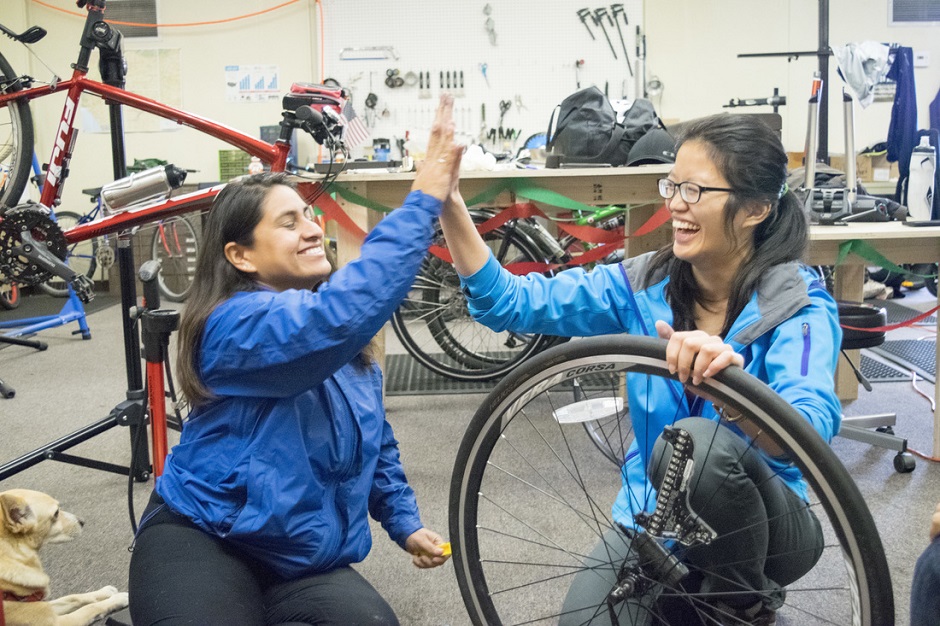
 It’s an impressive feat for an organization that formed just six years ago, starting out as a loose, all-volunteer network of residents and community activists who wanted to better advance active transportation in the San Gabriel Valley. Now in its third year under fiscal sponsorship with Community Partners, BikeSGV is hitting its stride. Strategic planning and successful fund development have made additional staff possible. Beyond the work involved in planning the Golden Streets event, the group continues to host its monthly Bike Train community rides and is ramping up operations at its El Monte Bicycle Education Center. There, anyone can come in and learn to fix or build their own bike. There’s even a ‘build a bike/earn a bike program’ a more affordable route to bike ownership. In the long-term, they are helping to lead the way toward a bicycle ‘superhighway’ connecting metro stations and communities to a regional network of protected pathways certain to transform the area.
It’s an impressive feat for an organization that formed just six years ago, starting out as a loose, all-volunteer network of residents and community activists who wanted to better advance active transportation in the San Gabriel Valley. Now in its third year under fiscal sponsorship with Community Partners, BikeSGV is hitting its stride. Strategic planning and successful fund development have made additional staff possible. Beyond the work involved in planning the Golden Streets event, the group continues to host its monthly Bike Train community rides and is ramping up operations at its El Monte Bicycle Education Center. There, anyone can come in and learn to fix or build their own bike. There’s even a ‘build a bike/earn a bike program’ a more affordable route to bike ownership. In the long-term, they are helping to lead the way toward a bicycle ‘superhighway’ connecting metro stations and communities to a regional network of protected pathways certain to transform the area.

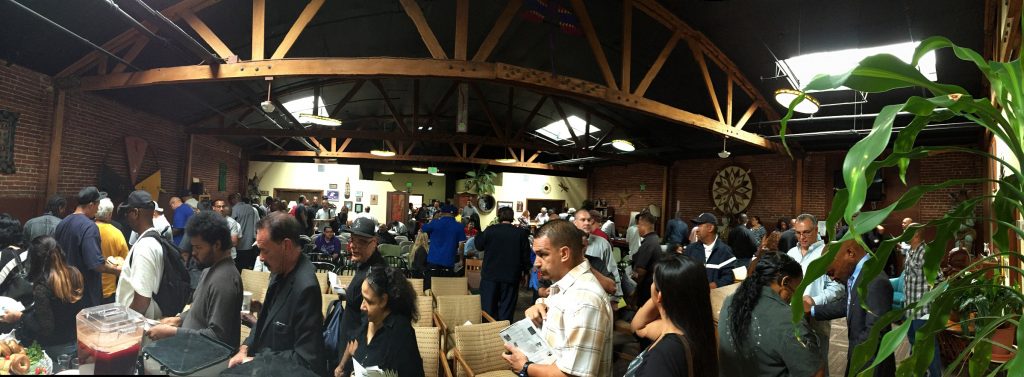
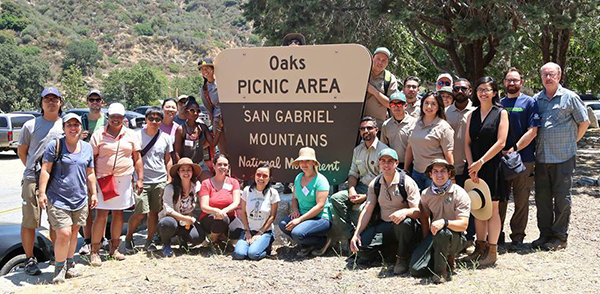
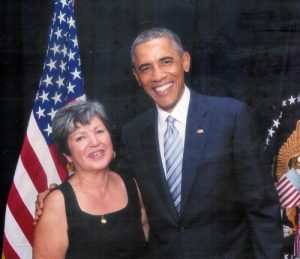 When a group of national and statewide environmental organizations, community based groups and leaders came together as San Gabriel Mountains Forever in 2008, the new coalition had just one mission in mind: to secure the safety and preservation of the historic San Gabriel Mountains. Just six years later, with the help of both Congresswoman Judy Chu and LA County Supervisor Hilda Solis, and with an unyielding focus on the needs and desires of local community members, the coalition saw their goal come to fruition: President Obama designated the San Gabriel Mountains in 2014 as the country’s latest national monument.
When a group of national and statewide environmental organizations, community based groups and leaders came together as San Gabriel Mountains Forever in 2008, the new coalition had just one mission in mind: to secure the safety and preservation of the historic San Gabriel Mountains. Just six years later, with the help of both Congresswoman Judy Chu and LA County Supervisor Hilda Solis, and with an unyielding focus on the needs and desires of local community members, the coalition saw their goal come to fruition: President Obama designated the San Gabriel Mountains in 2014 as the country’s latest national monument.
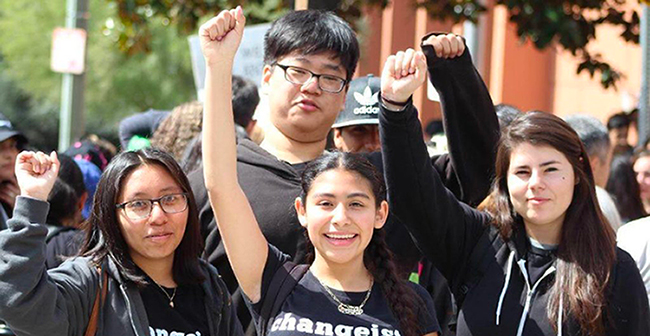
 When Mario and Beth began developing the organization in 2013-2014, a primary goal they set was to stand the test of time. They saw many youth development organizations created in the 1980s and ‘90s (and earlier) struggling to exist and remain relevant because they were resistant to signals around them indicating a need to change for current times. Mario wanted to figure out “how to not be fearful of evaluation but instead use it to change us.” He would face that challenge head-on just five years in. As Big Citizen Hub, the group originally intended to redefine the word “citizen” based on what it means to be invested in one’s community. But because the word “citizen” has become politicized, and even weaponized in the U.S., it spawned a lot of tension among youth participants and their parents. Feedback loops and data points were letting the organization know that the change in definition they were seeking just wasn’t happening in the current politicized climate. Instead of fearing what the data were telling them, the project leaders listened and chose to make a responsive pivot: they rebranded as Changeist. Mario describes this as one of the small ways they’re using information, but it’s really big, as is the shift in thinking it takes for some people to stop being afraid of interacting with data. This is one way Mario and Beth have created an organization unlike any they had ever worked in before. To keep the focus on learning, rather than using evaluation to judge and punish those who “fail,” Manijeh explores process questions with the team. They look at not just if the program works, but how it works, why it works, for whom it works, under what circumstances it works. Talking about the process moves away from the binary of success or failure, while still highlighting positive program aspects to amplify, as well as areas for growth.
When Mario and Beth began developing the organization in 2013-2014, a primary goal they set was to stand the test of time. They saw many youth development organizations created in the 1980s and ‘90s (and earlier) struggling to exist and remain relevant because they were resistant to signals around them indicating a need to change for current times. Mario wanted to figure out “how to not be fearful of evaluation but instead use it to change us.” He would face that challenge head-on just five years in. As Big Citizen Hub, the group originally intended to redefine the word “citizen” based on what it means to be invested in one’s community. But because the word “citizen” has become politicized, and even weaponized in the U.S., it spawned a lot of tension among youth participants and their parents. Feedback loops and data points were letting the organization know that the change in definition they were seeking just wasn’t happening in the current politicized climate. Instead of fearing what the data were telling them, the project leaders listened and chose to make a responsive pivot: they rebranded as Changeist. Mario describes this as one of the small ways they’re using information, but it’s really big, as is the shift in thinking it takes for some people to stop being afraid of interacting with data. This is one way Mario and Beth have created an organization unlike any they had ever worked in before. To keep the focus on learning, rather than using evaluation to judge and punish those who “fail,” Manijeh explores process questions with the team. They look at not just if the program works, but how it works, why it works, for whom it works, under what circumstances it works. Talking about the process moves away from the binary of success or failure, while still highlighting positive program aspects to amplify, as well as areas for growth. For many people the word “evaluation” brings to mind surveys that are administered at the end of a program to help determine if the program achieved its goals. This kind of delayed and linear evaluation has long been a source of frustration for many social innovators who want more rapid learning loops to help them adapt in real time. Instead of waiting until the end of a program to engage with an evaluator, leaders of initiatives addressing complex social issues find an embedded approach more useful. Engaging with an evaluator is an expense many CP project leaders think they can’t afford, but Mario sees it as an investment in the ongoing health of the program. Program development and process evaluation are so tightly woven that, for them, it’s all just programming. They use mobile surveys to collect data each week in real time, and their weekly analysis of those data informs how they engage with their youth participants and structure their program for the next week. It was this approach that also caught the attention of leaders in Sacramento. Governor Gavin Newsom’s office was so impressed by how Changeist collects and uses data, they invited the project to expand into an AmeriCorps program in multiple California cities. In 2019 Changeist is bringing its program to Stockton and growing the number of young people its LA program serves. In 2020 they’ll expand into another Central Valley city. Case-making is not Mario’s primary interest in data and evaluation, but he does admit that having Manijeh at the meetings with Governor Newsom’s team made it really easy to talk about why the program works: “The amount of research that we put into our program to make sure we’re doing the right stuff and that we’re looking at the right stuff and we’re responding to the right stuff, that is what made the case kind of bullet proof.” Their primary interest in gleaning information, however, is so that evaluation is another part of their program that empowers youth to share their voice, to feel more comfortable to show up as their whole selves, and to exercise their right to self-determination.
For many people the word “evaluation” brings to mind surveys that are administered at the end of a program to help determine if the program achieved its goals. This kind of delayed and linear evaluation has long been a source of frustration for many social innovators who want more rapid learning loops to help them adapt in real time. Instead of waiting until the end of a program to engage with an evaluator, leaders of initiatives addressing complex social issues find an embedded approach more useful. Engaging with an evaluator is an expense many CP project leaders think they can’t afford, but Mario sees it as an investment in the ongoing health of the program. Program development and process evaluation are so tightly woven that, for them, it’s all just programming. They use mobile surveys to collect data each week in real time, and their weekly analysis of those data informs how they engage with their youth participants and structure their program for the next week. It was this approach that also caught the attention of leaders in Sacramento. Governor Gavin Newsom’s office was so impressed by how Changeist collects and uses data, they invited the project to expand into an AmeriCorps program in multiple California cities. In 2019 Changeist is bringing its program to Stockton and growing the number of young people its LA program serves. In 2020 they’ll expand into another Central Valley city. Case-making is not Mario’s primary interest in data and evaluation, but he does admit that having Manijeh at the meetings with Governor Newsom’s team made it really easy to talk about why the program works: “The amount of research that we put into our program to make sure we’re doing the right stuff and that we’re looking at the right stuff and we’re responding to the right stuff, that is what made the case kind of bullet proof.” Their primary interest in gleaning information, however, is so that evaluation is another part of their program that empowers youth to share their voice, to feel more comfortable to show up as their whole selves, and to exercise their right to self-determination.
